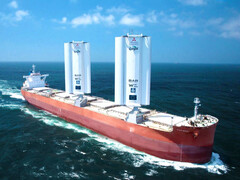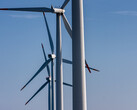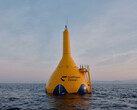In August last year, the Pyxis Ocean began its journey along busy shipping routes around the globe. Mounted on deck were two sails, called WindWings, which rotate independently into the optimum position.
Their purpose was to use wind energy to save some of the ship's diesel. After all, all ships once relied on this propulsion system, which had replaced the muscle power and rudder used until then.
Now the sail is back in a very modern, seaworthy and, at just under 40 meters, not so huge version. And the figures after the big practical test are convincing. On average, 3 tons of marine diesel could be saved per day - 14 percent of total consumption.
This corresponds almost exactly to the original announcement that 1.5 tons could be saved with each WindWing, which corresponds to 5.6 tons of CO2. This is significantly more than the annual CO2 emissions per capita per year.
The test run has therefore already met expectations. However, the potential for savings in freight shipping is enormous. Almost 1 billion tons of CO2 or 300 million tons of marine diesel are emitted or burned every year.
A few additional WindWings would be just what is needed. Based on the current price of diesel of around €500 ($550) per tonne (40 cents per liter), each additional sail would save €270,000 ($300,000) per year.
Add to this a CO2 tax of currently about 45 bucks per ton (13 cents per liter), which of course does not exist for marine diesel on the world's oceans, and the total is already €360,000 ($400,000). That should be worth it.
Only for the very large container ships will the technology need a few more adjustments. Here, the average consumption quickly reaches 100 tons per day (depending on speed, sea state and load).
It would therefore take much larger and probably more sails to achieve significant savings here. But a promising step has been taken.
















